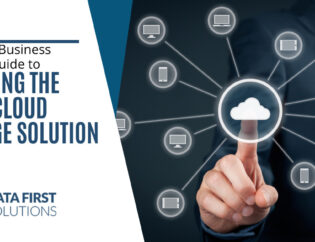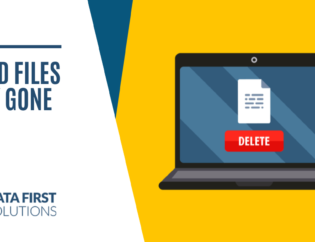
However, this valuable data is constantly at risk of loss or theft due to various factors like hardware failure, cyberattacks, natural disasters, or human error. Therefore, implementing robust data backup and protection measures has become more critical than ever before.
In this comprehensive guide, we will explore the importance of data backup and protection and provide practical insights on how to safeguard your digital assets effectively.
Why is Data Backup and Protection Important?
Preserving Business Continuity
Data is the backbone of any organization. The loss of critical business data can lead to significant disruptions, financial losses, reputational damage, and even legal consequences. Implementing a solid data backup and protection strategy ensures business continuity by minimizing downtime and enabling quick data recovery.
Safeguarding Personal Digital Assets
Our personal digital assets hold immense sentimental value. From cherished family photos to important documents, losing them can be devastating. By establishing proper data backup and protection mechanisms, we can protect our memories, preserve important information, and avoid the distress caused by data loss.
Data Backup Strategies and Best Practices
Regular and Automated Backups
Performing regular backups is crucial to avoid data loss. Automated backup solutions can simplify the process, ensuring that your data is backed up consistently without human intervention. Consider leveraging cloud-based backup services or dedicated backup software to streamline the backup process.
Offsite and Cloud Storage
Backing up data to offsite locations or utilizing cloud storage services provides an extra layer of protection against physical damage or theft of hardware. Cloud storage offers scalability, accessibility, and redundancy, enabling seamless data recovery even in the event of a catastrophic incident.
Multiple Backup Locations
Relying on a single backup location may still leave your data vulnerable. Distributing backups across multiple physical or cloud-based locations mitigates the risk of data loss due to localized events or service disruptions.
Encryption and Password Protection
Data security goes hand in hand with data backup. Encrypting your backups and using strong passwords prevents unauthorized access and safeguards sensitive information, ensuring the confidentiality and integrity of your data.
Data Protection Measures Against Cyber Threats
Antivirus and Firewall Software
Installing reputable antivirus and firewall software is the first line of defence against malware, ransomware, and other cyber threats. Regularly updating these tools ensures they stay equipped to detect and neutralize emerging threats effectively.
Employee Awareness and Training
Educating employees about the importance of cybersecurity and providing training on identifying phishing attempts, social engineering techniques, and other common attack vectors is crucial. Human error is often the weakest link in data protection, and fostering a security-conscious culture is essential.
Data Access Controls and Authentication
Implementing strong access controls and multifactor authentication mechanisms adds an additional layer of security to your data. Limiting access privileges to authorized personnel and regularly reviewing user permissions minimizes the risk of unauthorized data breaches.
Testing and Monitoring Data Recovery Processes
Having robust data backup measures in place is only half the battle. Regularly testing and monitoring the data recovery processes ensure the effectiveness of your backup strategy. Here are some relevant points to consider:
Periodic Data Recovery Testing
Performing scheduled data recovery tests helps identify any gaps or weaknesses in your backup system. This proactive approach allows you to address any issues promptly, ensuring that your backups are reliable and functional.
Continuous System Monitoring
Employing a comprehensive monitoring system allows you to track the health and performance of your backup infrastructure. Real-time alerts and notifications help detect anomalies or failures, enabling timely remediation.
The Future of Data Backup and Protection
Here are some of the emerging trends and technologies that are shaping the future of data backup and protection:
Artificial Intelligence and Machine Learning
AI and ML are revolutionizing data backup and protection by enhancing threat detection capabilities, automating backup processes, and predicting potential failures. These technologies offer improved efficiency and accuracy in safeguarding our digital assets.
Blockchain Technology
Blockchain’s decentralized and tamper-proof nature holds promise for data backup and protection. By leveraging blockchain, data can be stored securely across multiple nodes, making it resilient to unauthorized modifications or deletions.
Protect Your Data Today
Data backup and protection are fundamental in safeguarding our digital assets against various threats. By implementing robust backup strategies, adopting proactive security measures, and staying updated on emerging technologies, individuals and businesses can ensure the integrity, availability, and recoverability of their valuable data. Your digital assets are irreplaceable, and investing in data backup and protection is an investment in your peace of mind.
Contact Data First Solutions today to discuss how we can assist you in securing your data and designing a tailored backup and protection solution for your specific needs.









